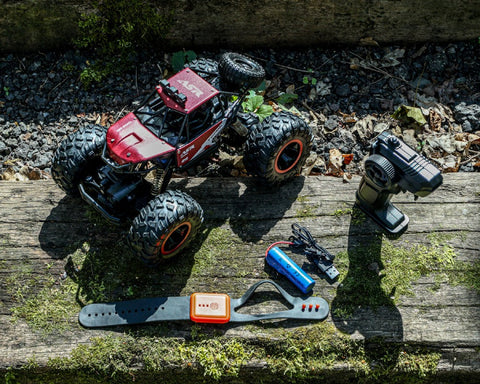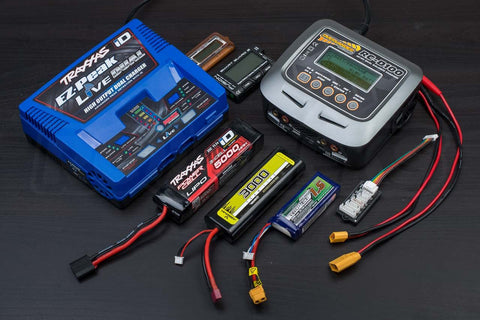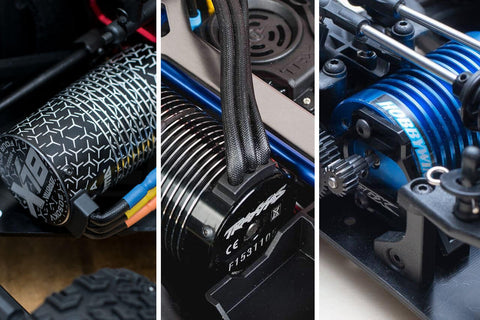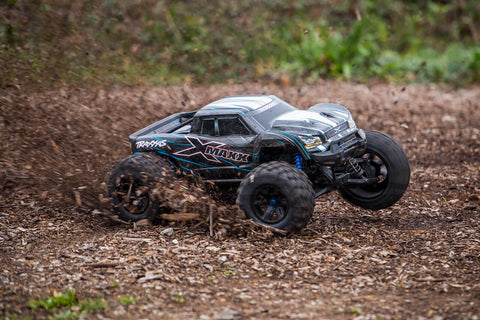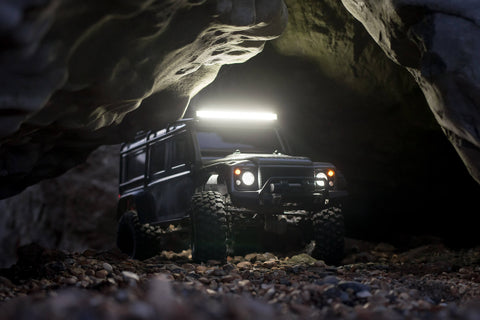We are always looking to improve our drone photos and videos, but can a filter help us do that? What on earth is an ND? Do I need a CPL? In this blog we attempt to answer these questions, taking a look at how using a filter can not only protect your camera but also how it alters the images it takes.
 Lets use a practical example of an ND filter, in this case on a Phantom 4 Professional. We are setting up the camera to shoot video but for ease of comparison we have shot in photo mode. The camera is set to manual exposure and have set the ISO level to 200 to minimise any noise in the image. Since we will be shooting at near enough 24 frames-per-second we want to maintain a shutter speed of 1/50 (roughly double the frame rate for a 180° shutter angle). On a sunny day that would result in an overexposed photo with blown highlights as seen in the first frame in the below image. To combat this we can fit an ND-8 filter and try again with the second image, an ND-16 for the third (which gets it pretty much perfect) before finally trialling an ND-32 which took it too far. Click the image to view it full size.
Lets use a practical example of an ND filter, in this case on a Phantom 4 Professional. We are setting up the camera to shoot video but for ease of comparison we have shot in photo mode. The camera is set to manual exposure and have set the ISO level to 200 to minimise any noise in the image. Since we will be shooting at near enough 24 frames-per-second we want to maintain a shutter speed of 1/50 (roughly double the frame rate for a 180° shutter angle). On a sunny day that would result in an overexposed photo with blown highlights as seen in the first frame in the below image. To combat this we can fit an ND-8 filter and try again with the second image, an ND-16 for the third (which gets it pretty much perfect) before finally trialling an ND-32 which took it too far. Click the image to view it full size.  As you can see, ideally you will need a range of ND filters on hand to ensure a correct exposure in changing light conditions. Here are those images again with the application UI still sat over the top to show that none of the camera settings were changed, again click the image to view it full size. We would recommend keeping an eye on the histogram (available in the camera settings) circled in green for the best representation of the exposure. Note that in the third, correctly exposed frame, very little of the graph values are falling off of the end of each side. For beginners also see the red circled EV value which you can use to help you track if the camera thinks it is correctly exposed; Note how its zero's out when the correct exposure is achieved.
As you can see, ideally you will need a range of ND filters on hand to ensure a correct exposure in changing light conditions. Here are those images again with the application UI still sat over the top to show that none of the camera settings were changed, again click the image to view it full size. We would recommend keeping an eye on the histogram (available in the camera settings) circled in green for the best representation of the exposure. Note that in the third, correctly exposed frame, very little of the graph values are falling off of the end of each side. For beginners also see the red circled EV value which you can use to help you track if the camera thinks it is correctly exposed; Note how its zero's out when the correct exposure is achieved.  Now we could increase the shutter speed to limit the amount of light coming into the camera but it would give our video frames an unnatural sharp appearance and any motion would be quite jittery. It is important to make the distinction between frame rate and shutter speed. For instance your Mavic Pro might be recording 30 frames every second (of image data) but the shutter can be opening and closing 300 times in that same second. In the past people have used ND filters to drop the shutter speed to somewhat 'mute' jello effects, but we suggest tackling the imbalance in your craft flight instead.
Now we could increase the shutter speed to limit the amount of light coming into the camera but it would give our video frames an unnatural sharp appearance and any motion would be quite jittery. It is important to make the distinction between frame rate and shutter speed. For instance your Mavic Pro might be recording 30 frames every second (of image data) but the shutter can be opening and closing 300 times in that same second. In the past people have used ND filters to drop the shutter speed to somewhat 'mute' jello effects, but we suggest tackling the imbalance in your craft flight instead.
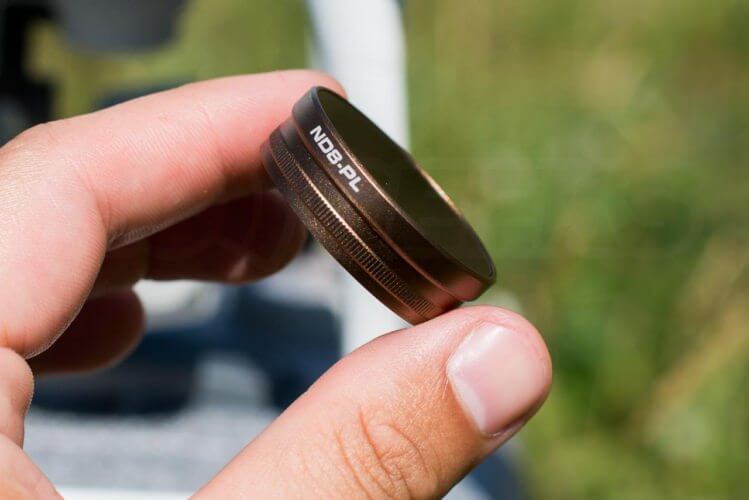 Some manufacturers, such as Polarpro offer CPL stacked with an ND filter, providing an all-in-one solution for drones (stacking filters often adds undesirable weight and causes gimbal imbalance) and we have used these for our test image. We use polarising filters to cut down on glare and make the image appear more vivid. The below image shows the polarisation effect in action. We fitted the filter, rotated it to the 'maximum correction' took a photo, rotated it to minimum correction and took another photo to compare. None of the camera settings were changed between the photos, only the filter itself; Click the image to view it larger.
Some manufacturers, such as Polarpro offer CPL stacked with an ND filter, providing an all-in-one solution for drones (stacking filters often adds undesirable weight and causes gimbal imbalance) and we have used these for our test image. We use polarising filters to cut down on glare and make the image appear more vivid. The below image shows the polarisation effect in action. We fitted the filter, rotated it to the 'maximum correction' took a photo, rotated it to minimum correction and took another photo to compare. None of the camera settings were changed between the photos, only the filter itself; Click the image to view it larger.  Note how the blues in the sky really come alive when the scattered light is filtered from the image. The foliage takes on a richer green and although not quite as clear, the reflections from the water below the craft have also decreased, darkening the stream. Its worth remembering that circular polarises need to be adjusted to suit the direction in which the camera is pointed. The relationship between the camera and the sun is key, as turning away means the light is approaching at a differing angle and the correction effect is likely to be lessened. This can be a pain when shooting as you must be intelligent with your usage, ensuring you re-adjust as the position of the sun and craft change.
Note how the blues in the sky really come alive when the scattered light is filtered from the image. The foliage takes on a richer green and although not quite as clear, the reflections from the water below the craft have also decreased, darkening the stream. Its worth remembering that circular polarises need to be adjusted to suit the direction in which the camera is pointed. The relationship between the camera and the sun is key, as turning away means the light is approaching at a differing angle and the correction effect is likely to be lessened. This can be a pain when shooting as you must be intelligent with your usage, ensuring you re-adjust as the position of the sun and craft change.
 The blue filter below intensifies the blue in the top of the frame while also reducing the shutter speed on the top by 1.3 stops, and tapers to clear at the bottom. Designed to cool down the color of the sky and add intensity without shifting the color of the ground.
The blue filter below intensifies the blue in the top of the frame while also reducing the shutter speed on the top by 1.3 stops, and tapers to clear at the bottom. Designed to cool down the color of the sky and add intensity without shifting the color of the ground.  Polarpro supply a set of graduated filters that can be used on any X3 camera (including the DJI Osmo)
Polarpro supply a set of graduated filters that can be used on any X3 camera (including the DJI Osmo)
 The majority of filters are a screw fitment. On our DJI Phantom 4 Pro we needed to remove the standard clear front element from the camera to reveal the filter ring thread by unscrewing it counter-clockwise.
The majority of filters are a screw fitment. On our DJI Phantom 4 Pro we needed to remove the standard clear front element from the camera to reveal the filter ring thread by unscrewing it counter-clockwise.  There will be times where the filter or the standard front element can be stuck on. Don't panic and try and force it off, instead reference the below graphic which offers some advice on how to remove a them from the camera without damaging it.
There will be times where the filter or the standard front element can be stuck on. Don't panic and try and force it off, instead reference the below graphic which offers some advice on how to remove a them from the camera without damaging it. 
Most high-end drones will come with a removable glass element on the front of the camera that can be swapped out for a filter. In brief filters can:
- Protect the front element of your drone camera
- Control the amount of light hitting the sensor (see ND)
- Control the direction of light hitting the sensor (see CPL)
- Select which wavelengths of light hit the sensor (colour tinting)
What are ND Filters for and what do they do?
ND stands for 'neutral density', intended to reduce the intensity of light without changing the colour or hue. ND filters are commonly labelled with an NDnumber which indicates their optical density and increases in as a multiple the 'more opaque' they become. Most photographers will refer to them by the number of 'stops' or 1EV difference in the light as measured by the camera. For example an ND4 will reduce the exposure by 2EV, an ND8 by 3EV, an ND16 by 4EV and so on. You can see a filter attached to the phantom below, note that you can no longer see the camera lens/aperture due to the reduction effect of the ND filter. Lets use a practical example of an ND filter, in this case on a Phantom 4 Professional. We are setting up the camera to shoot video but for ease of comparison we have shot in photo mode. The camera is set to manual exposure and have set the ISO level to 200 to minimise any noise in the image. Since we will be shooting at near enough 24 frames-per-second we want to maintain a shutter speed of 1/50 (roughly double the frame rate for a 180° shutter angle). On a sunny day that would result in an overexposed photo with blown highlights as seen in the first frame in the below image. To combat this we can fit an ND-8 filter and try again with the second image, an ND-16 for the third (which gets it pretty much perfect) before finally trialling an ND-32 which took it too far. Click the image to view it full size.
Lets use a practical example of an ND filter, in this case on a Phantom 4 Professional. We are setting up the camera to shoot video but for ease of comparison we have shot in photo mode. The camera is set to manual exposure and have set the ISO level to 200 to minimise any noise in the image. Since we will be shooting at near enough 24 frames-per-second we want to maintain a shutter speed of 1/50 (roughly double the frame rate for a 180° shutter angle). On a sunny day that would result in an overexposed photo with blown highlights as seen in the first frame in the below image. To combat this we can fit an ND-8 filter and try again with the second image, an ND-16 for the third (which gets it pretty much perfect) before finally trialling an ND-32 which took it too far. Click the image to view it full size.  As you can see, ideally you will need a range of ND filters on hand to ensure a correct exposure in changing light conditions. Here are those images again with the application UI still sat over the top to show that none of the camera settings were changed, again click the image to view it full size. We would recommend keeping an eye on the histogram (available in the camera settings) circled in green for the best representation of the exposure. Note that in the third, correctly exposed frame, very little of the graph values are falling off of the end of each side. For beginners also see the red circled EV value which you can use to help you track if the camera thinks it is correctly exposed; Note how its zero's out when the correct exposure is achieved.
As you can see, ideally you will need a range of ND filters on hand to ensure a correct exposure in changing light conditions. Here are those images again with the application UI still sat over the top to show that none of the camera settings were changed, again click the image to view it full size. We would recommend keeping an eye on the histogram (available in the camera settings) circled in green for the best representation of the exposure. Note that in the third, correctly exposed frame, very little of the graph values are falling off of the end of each side. For beginners also see the red circled EV value which you can use to help you track if the camera thinks it is correctly exposed; Note how its zero's out when the correct exposure is achieved.  Now we could increase the shutter speed to limit the amount of light coming into the camera but it would give our video frames an unnatural sharp appearance and any motion would be quite jittery. It is important to make the distinction between frame rate and shutter speed. For instance your Mavic Pro might be recording 30 frames every second (of image data) but the shutter can be opening and closing 300 times in that same second. In the past people have used ND filters to drop the shutter speed to somewhat 'mute' jello effects, but we suggest tackling the imbalance in your craft flight instead.
Now we could increase the shutter speed to limit the amount of light coming into the camera but it would give our video frames an unnatural sharp appearance and any motion would be quite jittery. It is important to make the distinction between frame rate and shutter speed. For instance your Mavic Pro might be recording 30 frames every second (of image data) but the shutter can be opening and closing 300 times in that same second. In the past people have used ND filters to drop the shutter speed to somewhat 'mute' jello effects, but we suggest tackling the imbalance in your craft flight instead.
What are CPL Filters for and what do they do?
ircular polarisers will normally have an adjustment ring around them (see the ridged surface on the filter barrel below) for rotating the element (but not the actual filter housing itself) allowing you to line up filter to let the desired light angles through. Its difficult to put into words but this animation on wikipedia shows the effect it in action, neutralising light coming in one plane from behind the filter. Some manufacturers, such as Polarpro offer CPL stacked with an ND filter, providing an all-in-one solution for drones (stacking filters often adds undesirable weight and causes gimbal imbalance) and we have used these for our test image. We use polarising filters to cut down on glare and make the image appear more vivid. The below image shows the polarisation effect in action. We fitted the filter, rotated it to the 'maximum correction' took a photo, rotated it to minimum correction and took another photo to compare. None of the camera settings were changed between the photos, only the filter itself; Click the image to view it larger.
Some manufacturers, such as Polarpro offer CPL stacked with an ND filter, providing an all-in-one solution for drones (stacking filters often adds undesirable weight and causes gimbal imbalance) and we have used these for our test image. We use polarising filters to cut down on glare and make the image appear more vivid. The below image shows the polarisation effect in action. We fitted the filter, rotated it to the 'maximum correction' took a photo, rotated it to minimum correction and took another photo to compare. None of the camera settings were changed between the photos, only the filter itself; Click the image to view it larger.  Note how the blues in the sky really come alive when the scattered light is filtered from the image. The foliage takes on a richer green and although not quite as clear, the reflections from the water below the craft have also decreased, darkening the stream. Its worth remembering that circular polarises need to be adjusted to suit the direction in which the camera is pointed. The relationship between the camera and the sun is key, as turning away means the light is approaching at a differing angle and the correction effect is likely to be lessened. This can be a pain when shooting as you must be intelligent with your usage, ensuring you re-adjust as the position of the sun and craft change.
Note how the blues in the sky really come alive when the scattered light is filtered from the image. The foliage takes on a richer green and although not quite as clear, the reflections from the water below the craft have also decreased, darkening the stream. Its worth remembering that circular polarises need to be adjusted to suit the direction in which the camera is pointed. The relationship between the camera and the sun is key, as turning away means the light is approaching at a differing angle and the correction effect is likely to be lessened. This can be a pain when shooting as you must be intelligent with your usage, ensuring you re-adjust as the position of the sun and craft change.
Graduated filters are designed to help increase the camera's dynamic range and assist in correctly exposing scenes which lack perfect lighting. They also offer creative adjustment of an image such as adding colour tone to the image. It is important to install these filters at the right angle to achieve the correct effect. The orange soft edged fade filter pictured below is designed to add warmth to an image, ideal for improving a sunset.
 The blue filter below intensifies the blue in the top of the frame while also reducing the shutter speed on the top by 1.3 stops, and tapers to clear at the bottom. Designed to cool down the color of the sky and add intensity without shifting the color of the ground.
The blue filter below intensifies the blue in the top of the frame while also reducing the shutter speed on the top by 1.3 stops, and tapers to clear at the bottom. Designed to cool down the color of the sky and add intensity without shifting the color of the ground.  Polarpro supply a set of graduated filters that can be used on any X3 camera (including the DJI Osmo)
Polarpro supply a set of graduated filters that can be used on any X3 camera (including the DJI Osmo)
Filter installation and care
Whilst the filter does protect the lens, the filter itself can be very expensive and thus some care is required when handling. As with any optical equipment its imperative to ensure the filter is clean, without smudges or dust specks. Many filters come with a foam-lined carry-case for storage and a micro-fibre lens cloth for cleaning any errant fingerprints. The majority of filters are a screw fitment. On our DJI Phantom 4 Pro we needed to remove the standard clear front element from the camera to reveal the filter ring thread by unscrewing it counter-clockwise.
The majority of filters are a screw fitment. On our DJI Phantom 4 Pro we needed to remove the standard clear front element from the camera to reveal the filter ring thread by unscrewing it counter-clockwise.  There will be times where the filter or the standard front element can be stuck on. Don't panic and try and force it off, instead reference the below graphic which offers some advice on how to remove a them from the camera without damaging it.
There will be times where the filter or the standard front element can be stuck on. Don't panic and try and force it off, instead reference the below graphic which offers some advice on how to remove a them from the camera without damaging it. 






